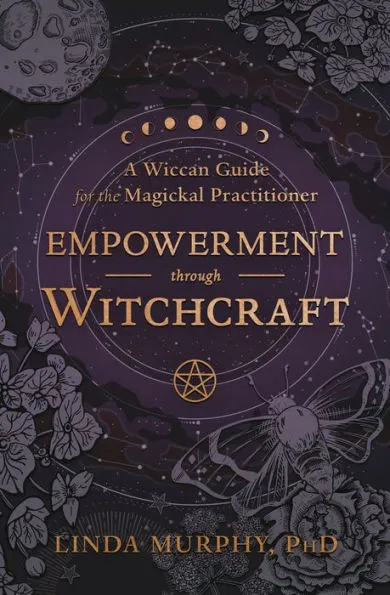This short, unassuming-looking book is full of information and inspiration.
Author Linda Murphy, Ph.D., holds several academic degrees and has walked the Wiccan path for over forty years. She began as a solitary practitioner, before the time of the internet, when information and spiritual companions were hard to come by. Here she has distilled the wealth of what she has learned and practiced, with a focus on Wicca.
A major theme of this book is that witchcraft is many things: a path, a worldview, a set of practices, a mystery religion. There are now countless books covering the same ground Murphy covers. But this book isn’t just a how-to. It reads like a memoir, conveying the essence of Murphy herself, now an elder teacher. She is at once confident, accomplished, and humble. Her presentation of witchcraft is that it is ultimately about self-empowerment.
Murphy grew up in what she calls “the netherworld between the Baptists and the Catholics of the Deep South.” But her roots are not just Christian. She’s also steeped in the folk practices of her Irish and Native American ancestors. Like many witches, Murphy was first introduced to Wicca via Starhawk’s The Spiral Dance. For about twelve years, Murphy practiced as a solitaire and with small groups. She worked her way through Wicca’s initiatory degrees while simultaneously pursuing and completing a Ph.D. in geography. Talk about higher education!
She begins the book by covering the Wheel of the Year. She’s got exercises for working with holy days, then with phases of the Moon, elements and tools, spell castings, rituals for life passages. She explains the distinction between thaumaturgy, the performance of magick to reach a goal, versus theurgy, which is working with deities and witchcraft as a religion. She notes that most witches are both thaumaturgists and theurgists, taking a middle path between the two emphases, to “avoid becoming obsessed or imbalanced” and with self-empowerment as a goal.
In a chapter on meditation, Murphy explains that Wicca has borrowed techniques from many paths, and she describes several types of meditation. One distinction she makes is that Wiccans often use meditation for an “astral quest” for something specific such as encountering a spirit animal or a specific deity. She cautions that this type of meditation is best done with the guidance of a teacher.
By the end of the book, she’s got a chapter, “Taking Your Power,” on how to come out of the broom closet and become publicly known as a witch, carefully. She uses the words “power” and “self-empowerment” throughout the book, and while she doesn’t explicitly define power, there are hints. Coming out as a witch is about “being true to your identity…a big step in taking your power.”
Elsewhere in the book, she writes about “taking personal responsibility” and what she calls a “great mystery,” that “you are the center of your own circle, your own reality, and your own matrix.” About her forty-plus year path, she concludes that the tools and practices of witchcraft have enabled her to conquer her own fears and reach a measure of her own personal power.
This book is important not just for its information and gems for spiritual practice but also because it contributes to a body of literature about how individual practitioners have made the teachings they’ve received uniquely their own.
~review by: Sara R. Diamond
Author: Linda Murphy, Ph.D.
Llewelyn Worldwide, 2023
220 pp. $17.99

